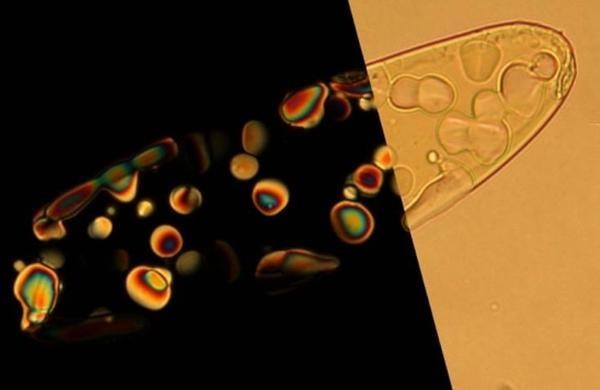The self-organization properties of DNA-like molecular fragments four billion years ago may have guided their own growth into repeating chemical chains long enough to act as a basis for primitive life, says a new study by the University of Colorado Boulder and the University of Milan.
While studies of ancient mineral formations contain evidence for the evolution of bacteria from 3.5 to 3.8 billion years ago—just half a billion years after the stabilization of Earth’s crust—what might have preceded the formation of such unicellular organisms is still a mystery. The new findings suggest a novel scenario for the non-biological origins of nucleic acids, which are the building blocks of living organisms, said CU-Boulder physics Professor Noel Clark, a study co-author.
A paper on the subject led by Tommaso Bellini of the University of Milan was published in a recent issue of Nature Communications. Other CU-Boulder co-authors of the study include Professor David Walba, Research Associate Yougwooo Yi and Research Assistant Gregory P. Smith. The study was funded by the Grant PRIN Program of the Italian Ministries of Education, Universities and Research and by the U.S. National Science Foundation.
The discovery in the 1980’s of the ability of RNA to chemically alter its own structure by CU-Boulder Nobel laureate and Distinguished Professor Tom Cech and his research team led to the development of the concept of an “RNA world” in which primordial life was a pool of RNA chains capable of synthesizing other chains from simpler molecules available in the environment. While there now is consensus among origin-of-life researchers that RNA chains are too specialized to have been created as a product of random chemical reactions, the new findings suggest a viable alternative, said Clark.

